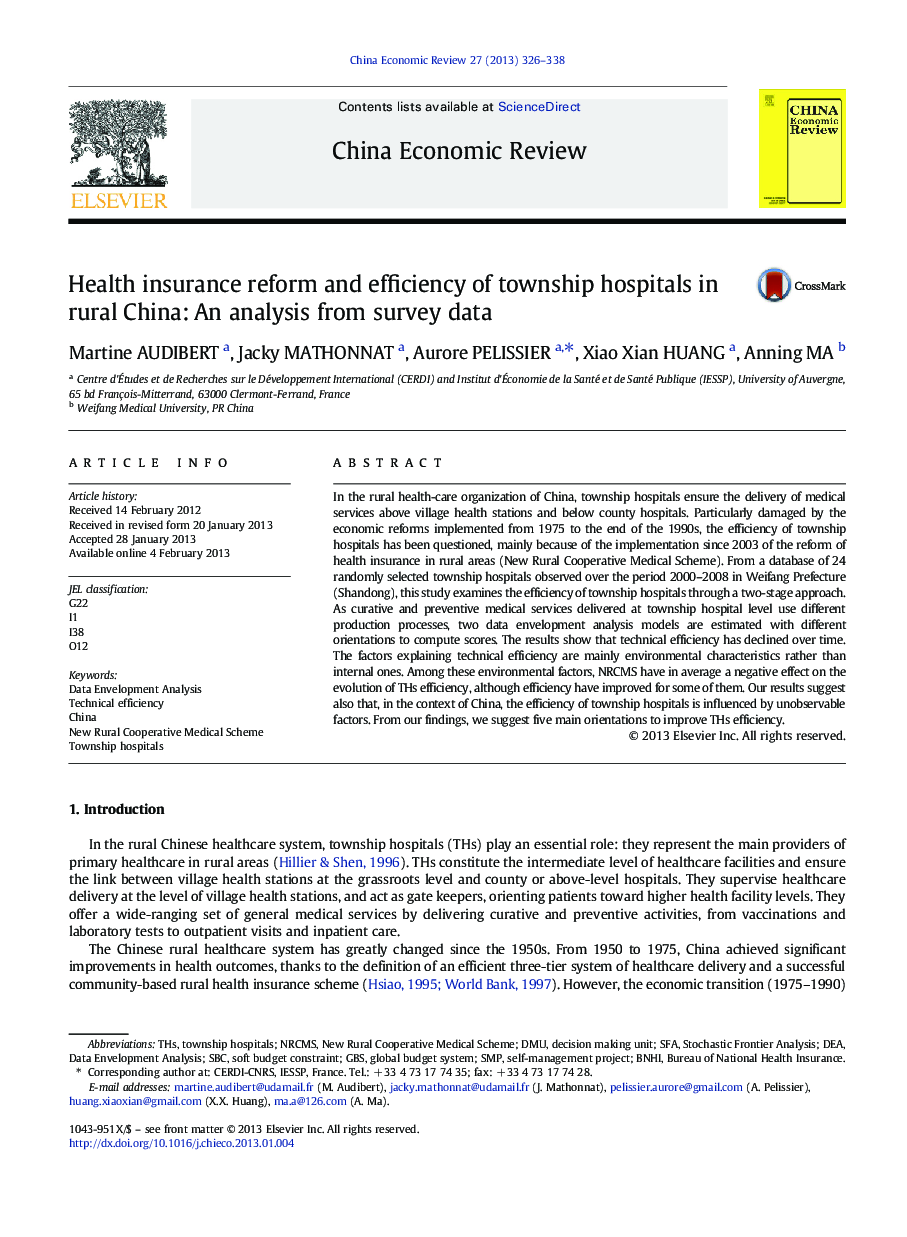| Article ID | Journal | Published Year | Pages | File Type |
|---|---|---|---|---|
| 5047688 | China Economic Review | 2013 | 13 Pages |
In the rural health-care organization of China, township hospitals ensure the delivery of medical services above village health stations and below county hospitals. Particularly damaged by the economic reforms implemented from 1975 to the end of the 1990s, the efficiency of township hospitals has been questioned, mainly because of the implementation since 2003 of the reform of health insurance in rural areas (New Rural Cooperative Medical Scheme). From a database of 24 randomly selected township hospitals observed over the period 2000-2008 in Weifang Prefecture (Shandong), this study examines the efficiency of township hospitals through a two-stage approach. As curative and preventive medical services delivered at township hospital level use different production processes, two data envelopment analysis models are estimated with different orientations to compute scores. The results show that technical efficiency has declined over time. The factors explaining technical efficiency are mainly environmental characteristics rather than internal ones. Among these environmental factors, NRCMS have in average a negative effect on the evolution of THs efficiency, although efficiency have improved for some of them. Our results suggest also that, in the context of China, the efficiency of township hospitals is influenced by unobservable factors. From our findings, we suggest five main orientations to improve THs efficiency.
